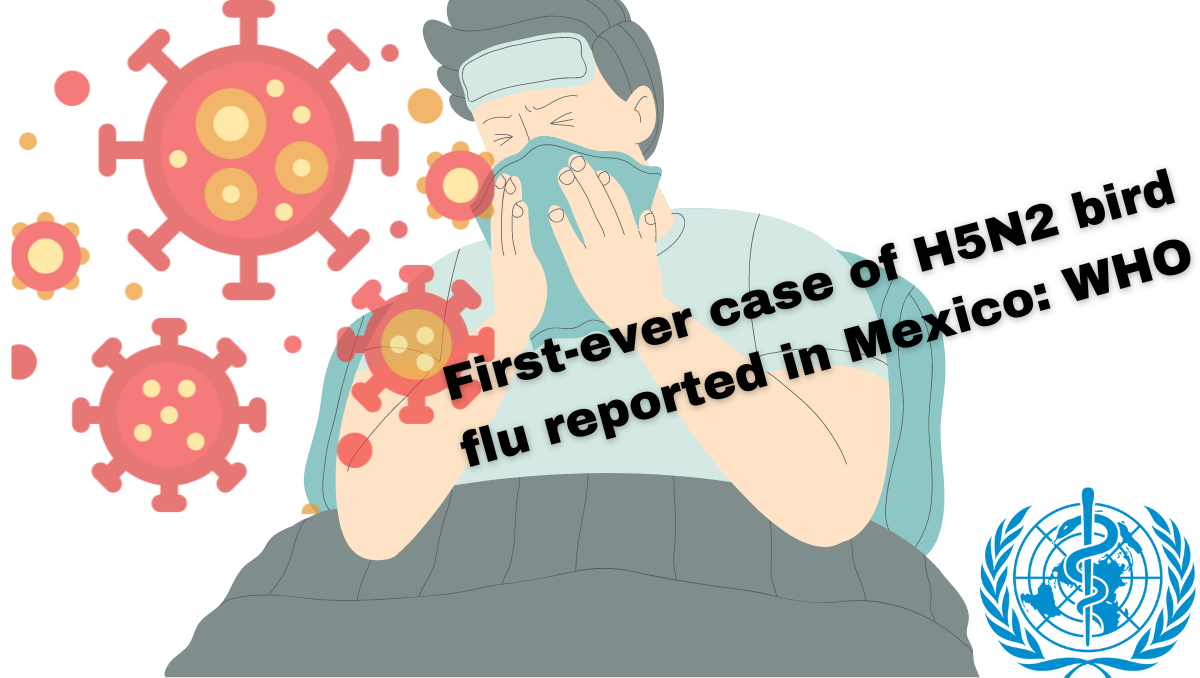The World Health Organisation reported that a Mexican man died due to the H5N2 bird flu, a virus that has never been detected in humans before. It is not clear how the victim contracted the virus, although the H5N2 virus has been reported before in poultry. The Organisation reported that the 59 year old man who died in Mexico had traces of the virus despite having no reported contact with poultry or other animals.
According to the family of the victim, the patient had been bedridden for unrelated reasons, following which he developed fever, shortness of breath and diarrhea. The patient also had other underlying conditions including chronic kidney failure, diabetes and high blood pressure. The patient was admitted to the hospital on the 24th of April and he passed away on the same day. Initially the patient was suspected of having an unidentified flu but subsequent testing confirmed that it was H5N2.
This case comes amidst growing warnings from experts that the increasing cases of bird flu have the potential to be hundred times more powerful than COVID-19.
Table of Contents
Recent Cases of Bird Flu Around the World
In April this year, the World Health Organisation alerted the global community of the growing spread of the H5N1 virus among new species that included human beings and the organisation warned of the virus having an ‘extraordinarily high’ mortality rate. Beginning in 2020, this current bird flu outbreak has led to the death of millions of poultry and has infected wild birds and land and marine animals with new species joining the infected list every month.
Jeremy Farrar the Chief Scientist of WHO called this a ‘global zoonotic animal pandemic’ stating that although no human to human transmission cases have emerged, the probability of such a development remains high. The WHO also stated that From 2003 to 2024, 463 deaths from 889 human cases have been recorded, bringing the fatality rate to 52 percent.
Brief Introduction to H5N2 Virus
The H5N2 virus is another subtype of the Influenza A virus. The virus is found largely in wildfowls but is also known to transmit among human beings and some other species including horses, dogs, bats etc. Influenza A viruses that can infect and transmit among wild water birds and poultry are called avian influenza viruses. Human infections occur when this virus is inhaled or gets into a person’s eye or nose in large quantities. This happens when the virus is present in the air and the person breathes it in or when a person touches a surface infected by the virus and then touches their mouth, eyes or nose.
Human infections of the virus can range from mild respiratory symptoms to severe illness, including pneumonia and acute respiratory distress syndrome (ARDS) and can be fatal. There is also a probability for avian influenza viruses to mutate and acquire the ability to spread efficiently among human beings. This could lead to a subsequent pandemic and a global health emergency.
Precautionary Measures
Since Poultry farmers and Industry Workers are most susceptible to contracting the virus, they must adopt biosecurity measures including limiting access to poultry farms, wearing protective clothing, frequent disinfection and control movement of animals and personnel between different poultry farms. Regular health check ups for workers and testing of poultry must also be implemented.
The general public is advised to avoid contact with wild birds and their habitats, especially those known for avian influenza outbreaks. They must also ensure proper cooking techniques making sure that viruses in poultry and eggs are eradicated. Proper hygiene practices must also be implemented when handling raw poultry, such as washing hands and disinfecting surfaces.
By adopting these measures, the spread of the virus can be effectively managed protecting both animal and human health.

1 Comment
Pingback: WHO Confirmed case of dangerous H9N2 virus in West Bengal - INPAC Times